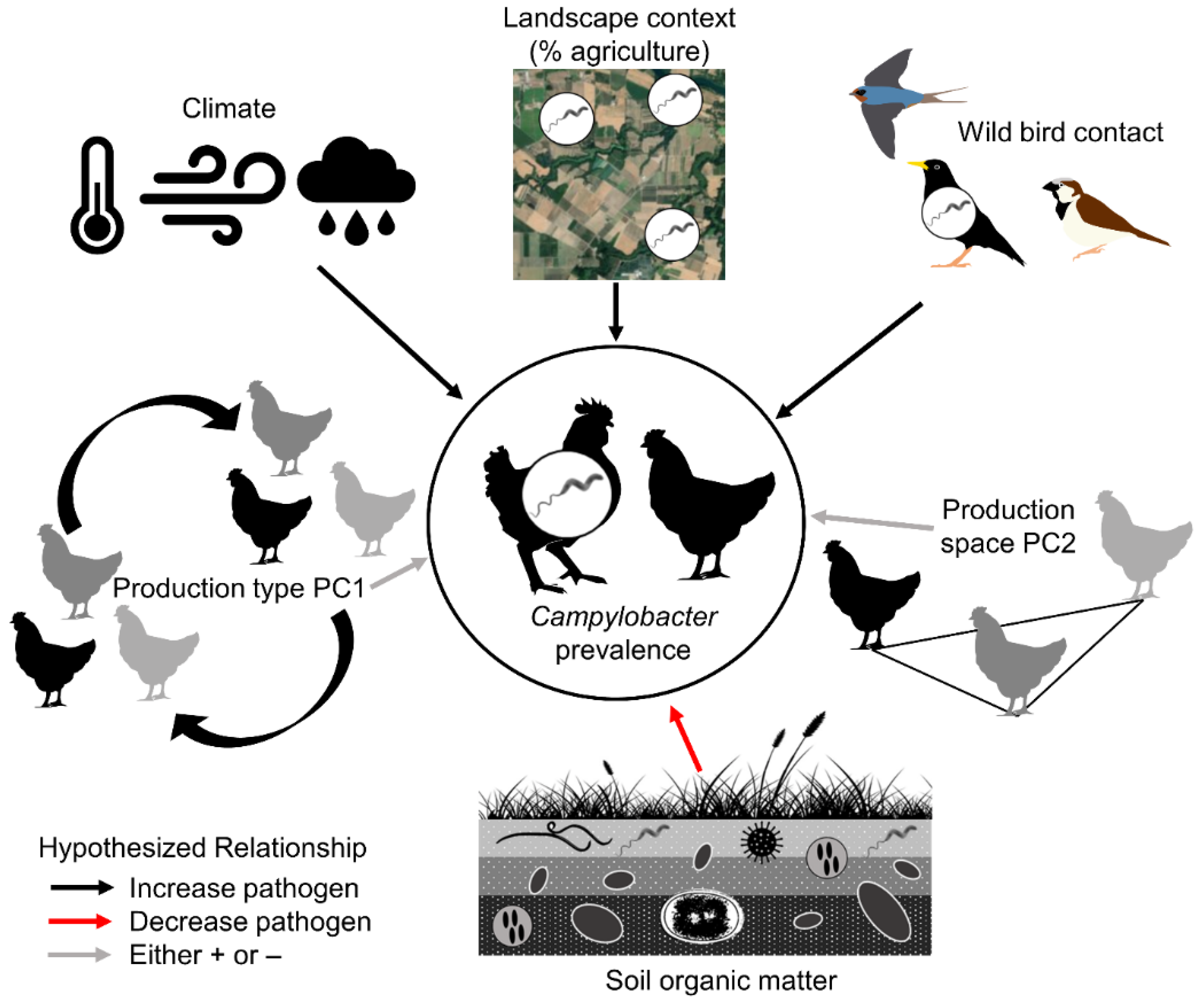2023-03-14 ワシントン州立大学(WSU)
有機やフリーレンジの鶏舎も含まれる「オープン環境」の鶏舎で、26%の鶏がこの病原体を保持していた。これに先立つ週に強い風速が観測され、農業がより集約的な地域にある鶏舎であるほど、カンピロバクターの存在率が高くなることが示された。
研究者たちは、防風林を設置したり、気象パターンを監視して、近隣の野原や家畜エリアから吹き付ける風によって病原体が鶏舎に飛散する可能性のある高風速期間には、鶏を室内に入れることを考慮するよう鶏農に提言している。
<関連情報>
- https://news.wsu.edu/press-release/2023/03/14/high-winds-can-worsen-pathogen-spread-at-outdoor-chicken-farms/
- https://www.mdpi.com/2076-2615/13/3/492
オープン環境で飼育された家禽のカンピロバクターリスクは、風速と景観のコンテクストによって媒介される Wind Speed and Landscape Context Mediate Campylobacter Risk among Poultry Reared in Open Environments
Olivia M. Smith,Kevin A. Cornell,Michael S. Crossley,Rocio Crespo,Matthew S. Jones,William E. Snyder and Jeb P. Owen
journal Animals Published: 31 January 2023
DOI:https://doi.org/10.3390/ani13030492

Simple Summary
Campylobacter spp. from contaminated chickens is the single largest cause of foodborne illness in the United States. Returning to traditional farming practices, such as rearing poultry on rotational pastures, is proposed to reduce human disease risks while improving animal welfare. Yet, little is understood about how environmental factors and farm management alter pathogen prevalence. Here, we assess environmental and farm management factors that impact Campylobacter spp. prevalence in poultry on 27 open-environment farms spanning the USA states of California, Oregon, Washington, and Idaho over a three-year period. We found that 26.0% of individual chicken fecal samples we tested were positive for Campylobacter spp. We detected Campylobacter spp. in ≥1 fecal sample in 69.4% of flocks and 85.2% of farms. Our analyses suggest that Campylobacter spp. prevalence increases in poultry on farms with higher average wind speeds in the seven days preceding sampling; on farms embedded in more agricultural landscapes; and in flocks typified by younger birds, more rotations, higher flock densities, and the production of broilers. Our findings indicate that farmers will face greater risk of infected poultry when there are high wind speeds, when their farms are located in highly agricultural areas, and if they raise broilers.
Abstract
Foodborne pathogens cause over 9 million illnesses in the United States each year, and Campylobacter from chickens is the largest contributor. Rearing poultry outdoors without the use of antibiotics is becoming an increasingly popular style of farming; however, little is understood about how environmental factors and farm management alter pathogen prevalence. Our survey of 27 farms in California, Oregon, Washington, and Idaho, USA, revealed a diversity of management practices used to rear poultry in the open environment. Here, we assess environmental and management factors that impact Campylobacter spp. prevalence in 962 individual chicken fecal samples from 62 flocks over a three-year period. We detected Campylobacter spp. in 250/962 (26.0%) of fecal samples screened, in 69.4% (43/62) of flocks, and on 85.2% (23/27) of farms. We found that Campylobacter spp. prevalence was predicted to increase in poultry on farms with higher average wind speeds in the seven days preceding sampling; on farms embedded in more agricultural landscapes; and in flocks typified by younger birds, more rotations, higher flock densities, and the production of broilers. Collectively, our results suggest that farms in areas with higher wind speeds and more surrounding agriculture face greater risk of Campylobacter spp. introduction into their flocks.



